SharePoint Online has a lot of great features. Unfortunately, emailing to SharePoint as we did with SharePoint on-premise, is not that easy.
We’ve helped hundreds of customers get this one right, and I’m sure we can help you. Once you’ve already configured your account and created some rules, follow this step-by-step guide to get this done.
N.B: ‘SharePoint Online,’ as this integration is called, offers a similar experience when sending data to SharePoint compared to the ‘Microsoft Flow to SharePoint‘ integration.
SharePoint Direct offers some additional options specific to SharePoint, such as sending your data to Events, which is not found in Microsoft Flow to SharePoint. The option you choose may simply come down to your preferences or the option you are already working with.
Step 1: Ensure you have at least one rule setup before starting your SharePoint integration. We have set up several rules to extract lead details from our email:

Step 2: Navigate to “Incoming emails” and ensure you have at least one email parsed. If you haven’t got any parsed results (as shown below), simply check the checkbox on your incoming email and click the “Parse” button:
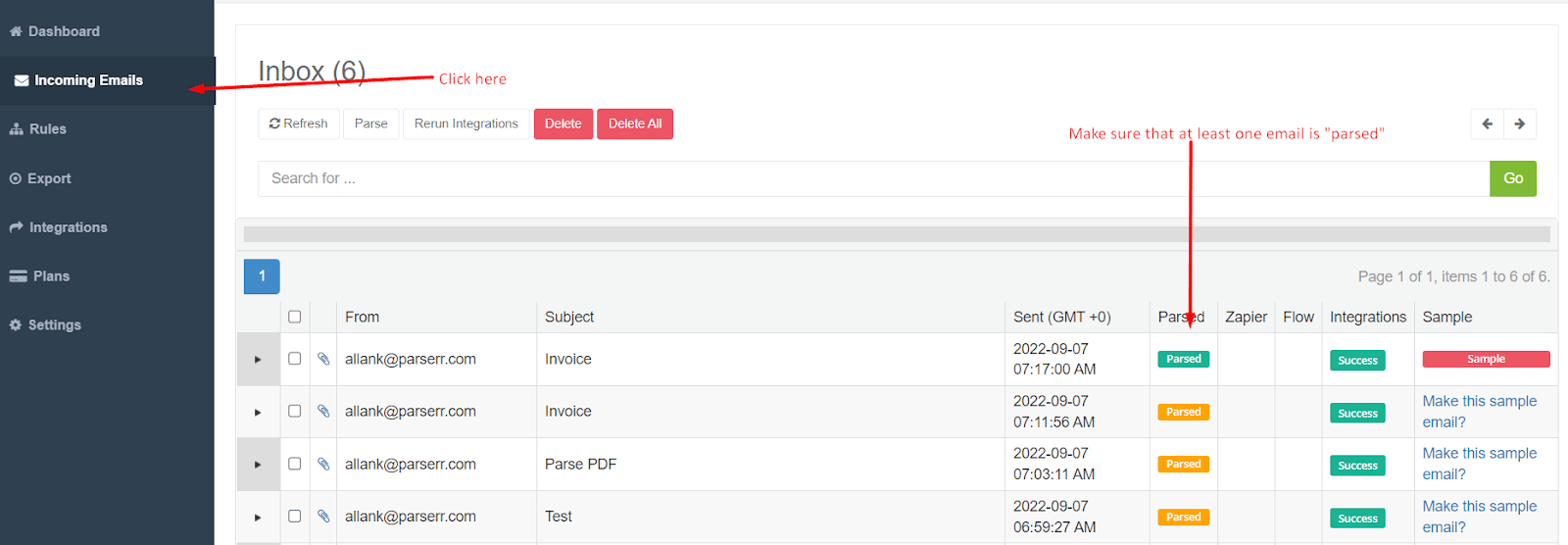
Step 3: Click on “Integrations” and then “SharePoint” in the left navigation menu:
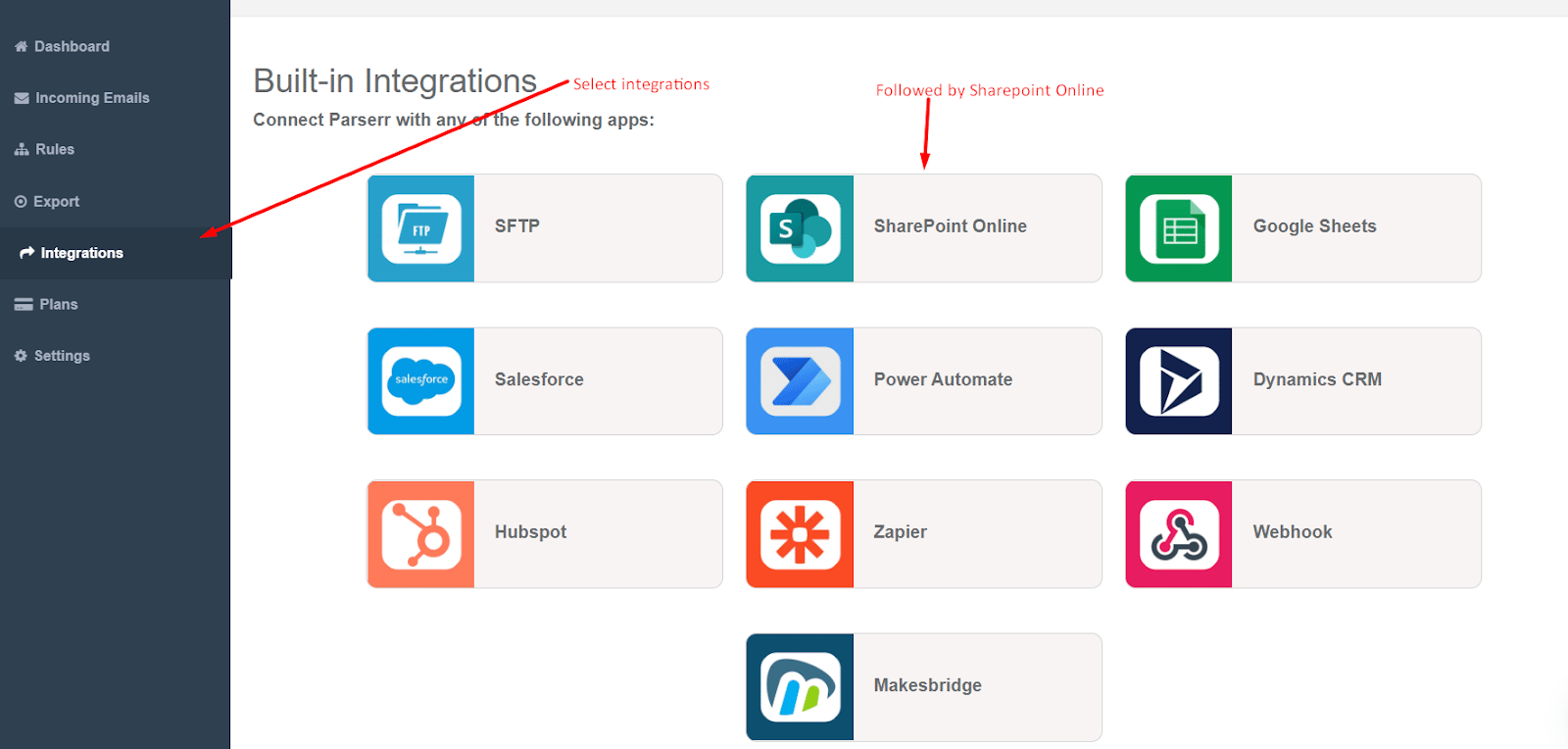
Step 4: Add your SharePoint connection details. You may experience connection issues if your username/password combo is incorrect or the site you input does not exist. Also, ensure that the user you are using to connect has full access to SharePoint.
You have successfully connected when you see the option to choose a document library to upload your email to:
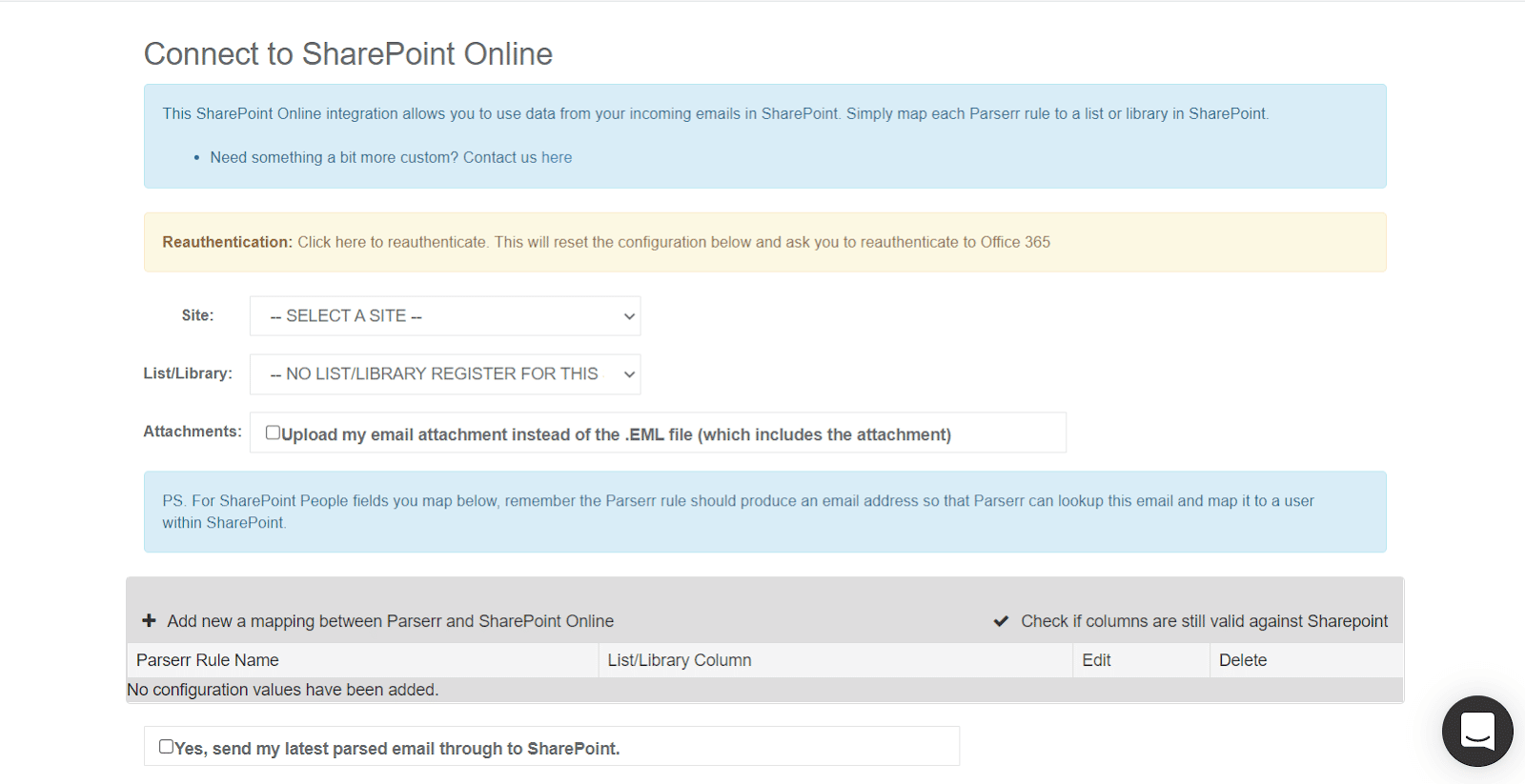
Step 5: Choose the appropriate document library to which you wish to upload your email. Additionally, you can choose to upload the incoming attachments as separate documents in your document library.
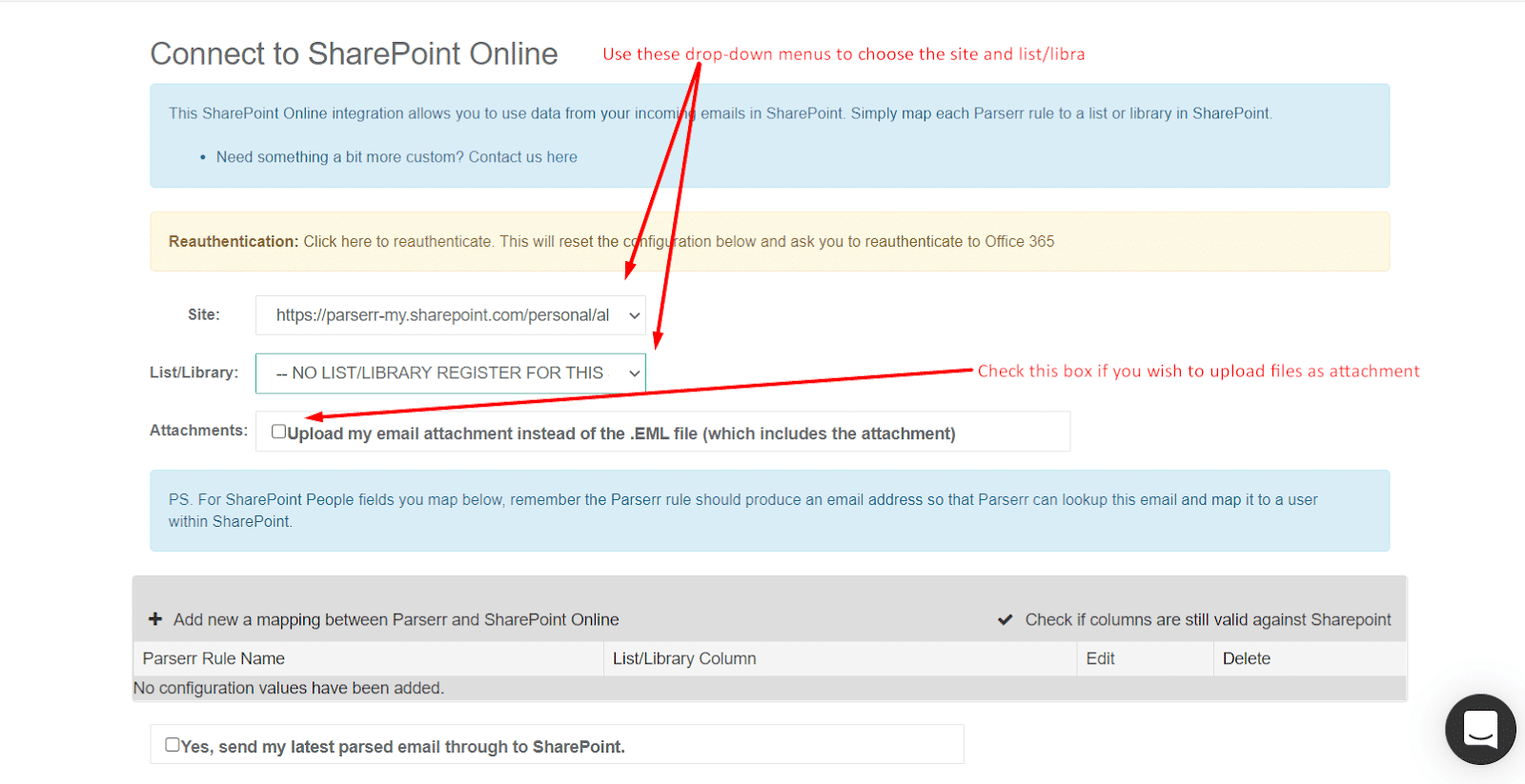
Step 6: Optionally map your Parserr rule names to document library columns. This way, all extracted data is available as metadata for your incoming email and/or attachments. In this example, we have mapped our extracted “Email” to the appropriate document library column in our Parserr document library:
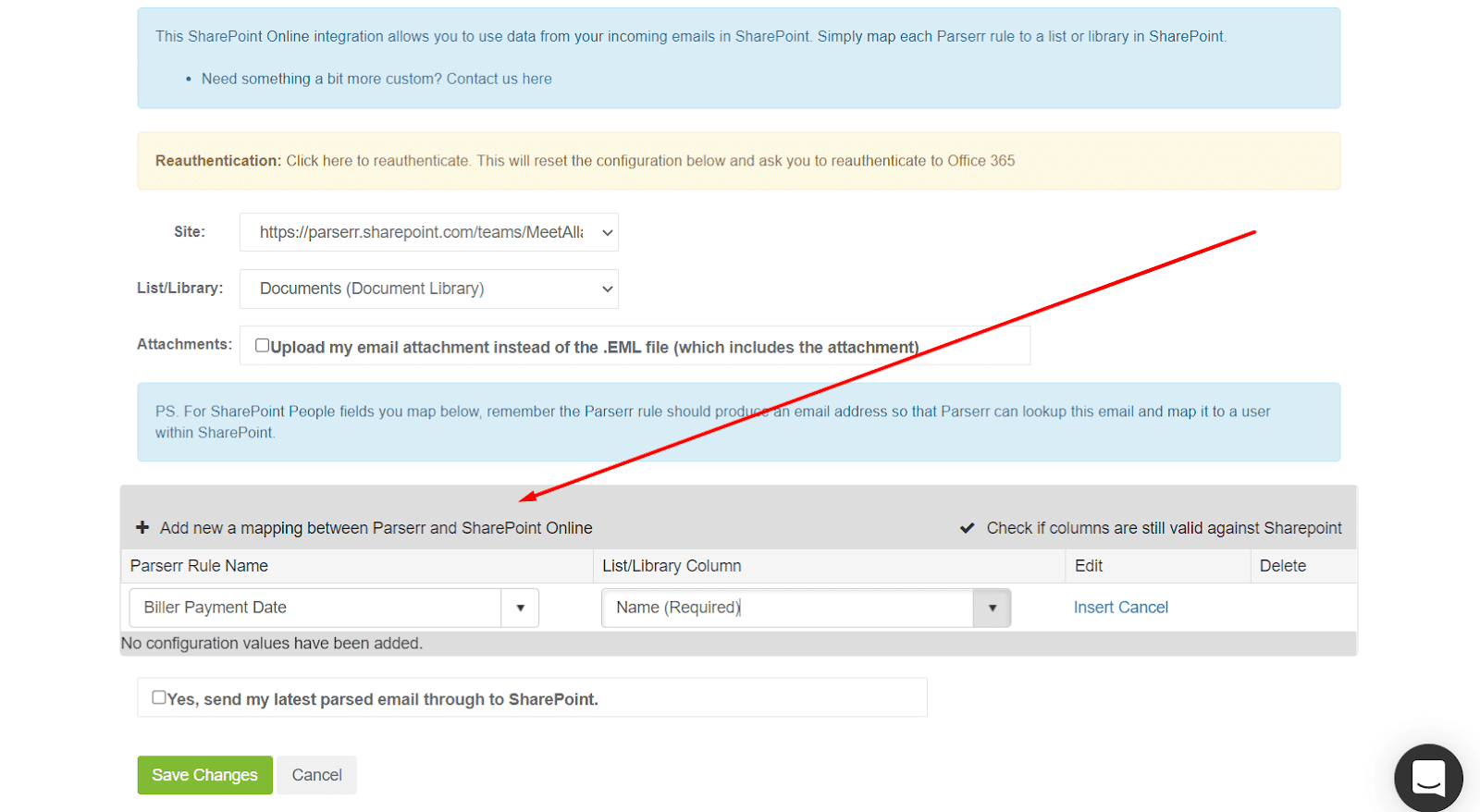
Step 7: Click the “Save Changes” button and test your integration by forwarding an email to your Parserr inbox. Remember the address is located on your dashboard. If everything is connected, you should see your email available in the document library within 30 seconds:


